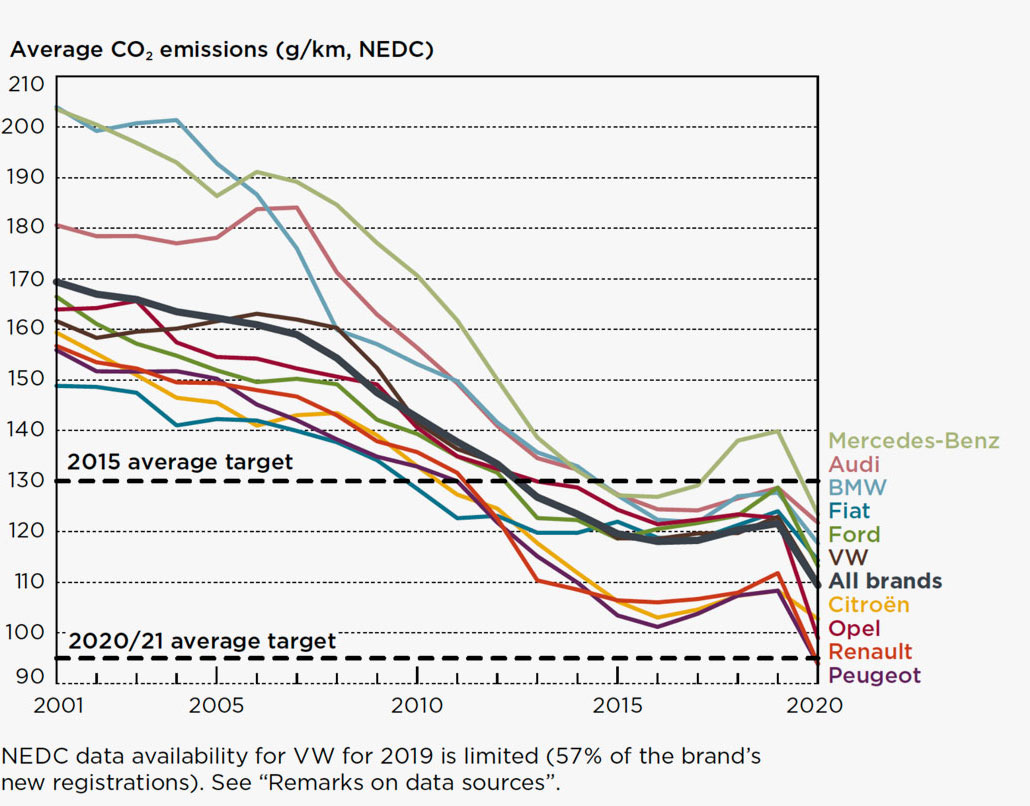New Emission Standards
Ever more stringent global emission legislation and national standards
The drive to reduce emissions from vehicles has been well signposted. For many years tighter and tighter legislation has been introduced around the world. In 2015, the target for CO2 emissions in Europe was 130g CO2/km and in 2021 it reduced to 95g CO2/km. The latest proposal before the EU parliament is to target a 25% reduction in fleet average CO2 emissions by 2025 and a 50% reduction by 2030. What is more, these targets will be universal and set according to the average mass of a manufacturer's vehicles.
The diagram below shows how the regulations on emissions have evolved in recent years.
2017
- PN regulations for GDi engines - EU6c
- Light Commercial Vehicles (LCV) targets 178g/km
2025
- Target 78-68g/km for vehicle fleet average. This sets the bar high.
2015
- 130g/km for all passenger cars
- Costly NOx reduction for diesel - EU6b
2021
- 95g/km (NEDC) - 27% reduction from all OEMs
- Worldwide Light-duty Test Cycle (WLTC) and Real Driving Emissions (RDE) test challenges
- LCV targets 147g/km
Euro Emissions Standards - Gasoline
| Date | CO | HC | HC + NOx (g/km) |
NOx | PM | PN (#/km) |
|
|---|---|---|---|---|---|---|---|
| Euro 1 | 1992.07 | 2.72 | 0.97 | -- | -- | ||
| Euro 2 | 1996.01 | 2.20 | 0.50 | -- | -- | ||
| Euro 3 | 2000.01 | 2.30 | 0.20 | -- | 0.15 | -- | |
| Euro 4 | 2005.01 | 1.0 | 0.10 | -- | 0.08 | -- | |
| Euro 5 | 2009.09 | 1.0 | 0.10 | -- | 0.06 | 0.005* | |
| Euro 6 | 2014.09 | 1.0 | 0.10 | -- | 0.06 | 0.005* | 6.0X1011** |
**6.0x1012 within first three years from Euro 6 effective dates
The challenge facing vehicle manufacturers
OEMs face an ongoing challenge to comply with new emissions standards while continuing to satisfy the driving expectations of their customers.
If the average CO2 emissions of a manufacturer’s fleet exceed the requirement, manufacturers serving the EU market must pay an excess premium for each new car registered. Since 2019 this has been set at €95 for each g/km of CO2 above the target. The size of these fines is driving OEMs to reduce their fleet average CO2.
While GDi engines offer scope to lower CO2 emissions, as well as improve performance and fuel consumption, the downside is a significant increase in the mass and number of particulates released into the air. They typically emit between 10 and 40 times more particles (by mass) than PFI engines and over one-thousand times the number of particles.

Source: EUROPEAN VEHICLE MARKET STATISTICS Pocketbook 2021/22 published by International Council on Clean Transportation Europe
In summary, a GDi engine working at optimal efficiency offers the benefits of increased fuel efficiency, consistent power output and optimum reliability as well as lower CO2 emissions. Dynamico is able to ensure that these engines perform as they were designed to allow a true balance between reducing emissions and performance.
How Dynamico can help
Emissions testing in accredited facilities has proven that Dynamico has a positive effect in reducing particulate emissions. This reduction can be achieved within one tank of fuel containing Dynamico technology.
New test protocols have been established in line with this new legislation
Take a journey through the engine to see how the Dynamico effect works for yourself.


